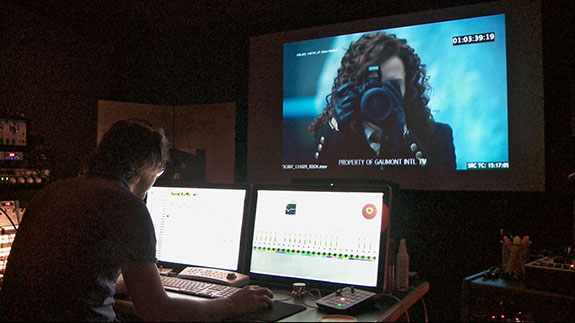
One of the reasons NBC’s Hannibal works so well is that the show is truly unlike anything else on television. Its visuals and rhythms are distinct, defined by the talents of Hard Candy director David Slade. I rarely hear anyone mention this about Hannibal, but it may have the most non-diagetic imagery I’ve ever seen in a TV drama. First introduced through hallucinations or fever dreams, these non-diagetic images are the themes and metaphors of the series realized in full motion. They push the show further and further toward avant-garde. The show’s dialogue is alien and poetic. Characters are frequently silent, even with one another. These silent moments are held to odd lengths, allowing us to savor them like a conductor holding a fermata. The show lacks warmth and humanity, and is nearly devoid of traditional humor. Characters are stiffly-postured and immaculately costumed. Sets are decorated in gaudy splendor. There is decadence in the show’s abundant gore, echoed perfectly by the show’s near-pornographic display of cooking and eating. Eight years ago, we thought Dexter was TV’s sexiest killer, but Dexter can’t hold a candle to the style and poise of Hannibal.
There’s also a playfulness in the show, which comes from the creative team understanding what fans like about it. Brash narrative and stylistic choices are made frequently, and sometimes it feels like they’re actively trying alienate the audience, especially audience members who love Thomas Harris’ canon. What Bryan Fuller and his team are really doing is creating a feeling that no one is safe; not even the viewer. It’s very cinematic, this feeling, in that it contradicts the lulling sense of security that most audiences fall into while watching a show. Hannibal feels risky, which is extremely appealing, but that risk might end up biting the show in the ass. It’s so bizarre that it’s a danger to itself. It hasn’t connected with audiences like The Walking Dead has, even though both shows feature boundary-pushing levels of violence and gore. One can argue that NBC’s insistence on a Friday night time slot has damaged the show’s chances at developing a larger audience, but after two seasons I don’t think the show is really meant for a larger audience. Simply put: it’s a weird fucking show, and it’s kind of astonishing that we’re getting a third season.
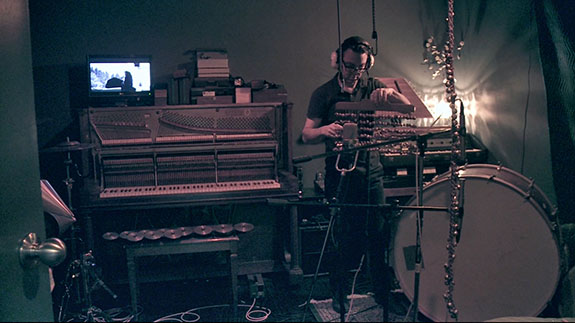
Hannibal’s weirdness, that avant-garde style and rhythm, is accompanied by what might be the strangest score ever composed for television. Composer Brian Reitzell had collaborated with director David Slade on 30 Days of Night, creating a terrifying exploration of atonality; a scraping, chugging, shrieking din that far outshone the film itself. I’d never heard anything like it. It’s one of the few scores of the last decade that is comparable to Hannibal in its insanity. I own that soundtrack, but I don’t think I’ve ever listened to it all the way through. It’s too challenging, too harsh. It puts me on edge, gets me in a weird mood. It’s not the kind of music you can pump through little white earbuds while you’re on the elliptical machine or while you do laundry. The human brain craves patterns and predictability: steady, repeatable rhythms that are easily counted in two, threes, or fours. Reitzell’s scoring technique rarely indulges in the luxury of time signature, so naturally, the brain recoils.
When it comes to sheer listenability, Hannibal is much the same. The music is brilliant, but it’s not exactly toe-tapping. Perhaps that would explain why it has taken so long to put out any kind of soundtrack, but that’s sheer guesswork on my part. Also, the score is recorded and mixed in 5.1 surround for the show, and has been re-mixed and remastered into stereo for the albums, which I’m sure took a hell of a lot of time. Perhaps another reason for the long wait is that the show is positively bursting with music: Reitzell estimates that for each forty-three minute episode, he composes about forty minutes of score. With so much music, how does one even begin to curate all of it into a tidy package? The resulting package is structured in a very odd way: four separate albums (two per season), and every track (with a single exception) is an abridged suite of music from a single episode. The suites vary in length from three and a half minutes to over eighteen minutes, but more than half of the suites are over ten minutes in length. It’s an inventive way to condense so much music. Speaking of music, let’s get to it.
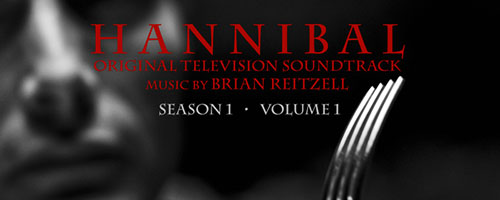
S1V1 is easily the most accessible of the volumes. It features a lot of familiar instrumentation, and is very synthy. The acoustic instruments used are quite traditional: piano, clarinet, saxophone, wood block, and some gamelan percussion. Some of the cues you’ll hear almost sound like Cliff Martinez cues, in that you’ll find a more solid rhythmic structure. For example, the introduction of Freddie Lounds at the beginning of Amuse-bouche has a throbbing, electro quality that could almost pass for a Downward Spiral era Nine Inch Nails song. Several of the tracks (Potage, Œuf) are very ambient, and remind me (oddly enough) of the soundtracks for Myst and Riven. You’ll hear excerpts from recognizable Baroque compositions like Handel’s Piangerò la sorte mia from Giulio Cesare, or the Aria from Bach’s Goldberg Variations (which reappears several times over both seasons).
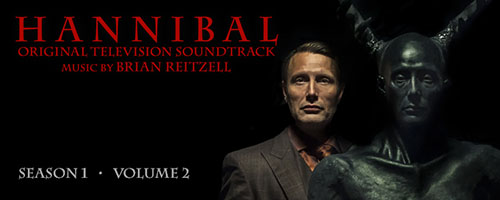
S1V2 is where things start to get pretty weird. This disc contains the longest suites in the entire set, but also two of the shortest, so it’s all over the place in that regard. It doesn’t really make much of a difference if you’re listening to the disc from start to finish, but trying to locate a favorite moment will prove difficult. You’ll know you’re not in Kansas anymore when about 3:30 into Fromage the bowed strings start to shriek and a metallic squealing overwhelms the soundscape. Drums start to pound, and then… respite: we hear the Aria from Goldberg Variations again, played with lovely, slow rubato on the harpsichord. In Trou Normand, we hear the familiar “pendulum sound”, which plays when Will imagines himself in the mind of a killer. This disc is particularly heavy with atonal atmosphere cues, which act almost like ambience and not like score. The track Rôti stands out as an extreme example of this. It lasts for nearly seventeen minutes, but isn’t nearly as involving or memorable as some of the shorter tracks on the disc. Luckily, Relevés, the longest suite in the entire set, is interesting enough to make up for it.
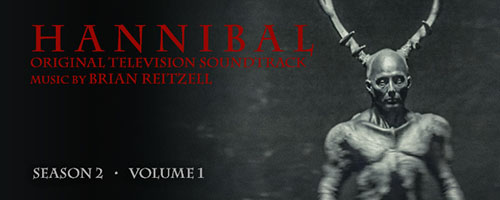
Season two, while retaining a similar musical atmosphere to the first season, is a pretty different beast. The season’s episodes were laid out like the dishes of a multi-course Japanese Kaiseki, so Reitzell felt it appropriate to bring his Japanese influences out to play. If you like Toru Takemitsu (and you should), you’ll hear some similarities to his film scores. Reitzell doesn’t use silence like Takemitsu does, but the moments of bombastic percussion that Takemitsu favored are here. They’re just amplified, lengthened, and made more dense. In the first track (aptly titled Kaiseki), you’ll hear some very strange sounds made by stretching a ribbed plastic tube, featured when Will has a flashback of something being forced down his esophagus. It’s a really startling sound, one unlike anything we’ve heard in the Hannibal orchestra before. You may relax at the opening of Futamono, in which you’ll hear Antoine Forqueray’s Harpsichord Suite no. 4 in G Minor, but Reitzell follows it up with a horrifying and surreal wash of harpsichord dissonance at the end.
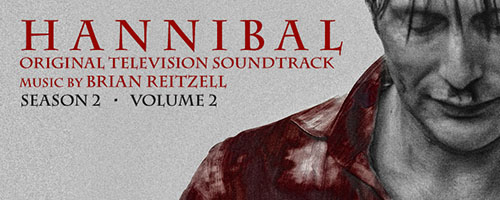
This score is very reactive: Reitzell likes to record his own playing to picture, so much of what we hear (especially in the second season) is based on Reitzell reacting to the picture in real time. Just turn on the mics, hit record, and let him loose in the studio with all the wacky percussion instruments. This may be especially apparent in the second season because Reitzell had very limited time to compose the score. According to the Blu-Ray, his season two score may have been recorded in as little as seven days (fucking yikes). I don’t mean for any of this to sound reductive or insulting. It’s a method, and it works. The best example would be the carnival-esque craziness of Tome-wan (in which a certain someone removes their own face). This track is unrivaled in its percussive glee. All the toys were dragged out of the toy box to be heard, and it’s excessive in just the right way. The final two tracks on this disc are Mizumono (the season two finale) and Bloodfest, which is a nine-minute cue from Mizumono. In the former, things get very literal when we hear the sound of the ticking alarm clock that counts down to the horrorshow we got at the end of the episode. It’s a bit heavy handed I suppose, but Hannibal has never been a subtle show. Bloodfest (what a name!) is totally unique among the other tracks, because it is essentially a gorgeous, languid, shimmering, stretched-out version of Bach’s Goldberg Aria. It’s a stunning re-interpretation, and it only makes me hungry for more of Reitzell’s Hannibal.
In closing, it must be said that a soundtrack this challenging and odd won’t be for everyone. Like the show itself, it’s often over-the-top and very cold. It’s not feel-good music, and by itself, it does not capture the essence of what makes Hannibal such a fantastic show. It is, however, a crucial piece of the puzzle. It’s part of why we devoted Fannibals (yes, it’s a thing) love the show so much. I do wish the albums were available in a box set for a reduced price, but if you think they’d fit nicely in your collection, here are the Amazon links for each volume:
Rating: 




Out of a Possible 5 Stars